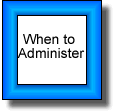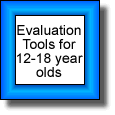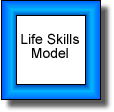 |
|||||||||
 |
|||||||||
 |
|||||||||
 |
|||||||||
 |
|||||||||
Communication: Research Abstract
Baldwin, T. L. & Garvey, C. J. (1973). Components of accurate problem-solving communications. American Educational Research Journal, 10(1), 39-48. This article describes a study which attempts to identify components of accurate, two-person communication. Researchers identified problem-solving communication as a type which would make it possible to identify accurate communication behaviors. They assigned three tasks to research subjects, each approximately 10 years old, in order to provide measures of communication accuracy and also measures of three hypothesized components: orientation of one to the other's situation, identification and communication of essential information, and verification of solutions. Results of the study suggest that communication components can be identified which are related to accuracy in certain situations.
Bowman, J. P. & Targowski, A. S. (1987). Modeling the communication process: The map is not the territory. Journal of Business Communication, 24(4), 21-34. The purpose of this article is to give an overview of several of the most significant models of the communication process. The authors then evaluate these models based on current research in the field, and present the need for a new paradigm in the area of communication process models. They contend that the models created throughout the study of the communication process actually create more questions than they answer. However, they also recognize the important contributions of the mentioned models to the understanding of the process.
Cochran, D. S. & Gibson, C. K. (1979). Putting a square peg into a round hole: Communication models and their application. Journal of Business Communication, 17(1), 27-36. Educators have long been using communication models to "teach" communications, according to Cochran and Gibson. However, they believe this has not been effective instruction. The authors propose in this article a combination of an integrated communication model, systems theory, and the case method as a teaching package that should prepare the students to communicate effectively in the work environment. The article discusses several communication models and applications of a model. Authors propose this teaching package should help to bridge the gap between communication theory and its application.
Duran, R. L. & Spitzberg, B. H. (1995). Toward the development and validation of a measure of cognitive communication competence. Communication Quarterly, 43(3), 259-275. This article describes how the authors developed a measure of cognitive communication competence and illustrates preliminary validity data. It covers an extensive review of literature concerning communicative competence, and describes it as a function of four mental processes: 1) anticipation of variables in the situation that could influence one'' communication behaviors, 2) perception of the consequences of one's communication choices, 3) immediate reflection, and 4) extended reflection upon the choices one has made. Using these components, the authors developed the Cognitive Communication Competence Scale.
Evers, F. T. & Rush, J. C. (1996). The bases of competence: Skill development during the transition from university to work. Management Learning, 27(3), 275-300. This article presents a model of four 'base competencies' which combine to form a generic skill set necessary for advanced-level corporate jobs, managerial and otherwise. The base competencies - mobilizing innovation and change, managing people and tasks, communicating, and managing self are derived from 18 workplace skills, and are designed to complement technical expertise. The communicating competency consists of four components: interpersonal, listening, oral communication, and written communication. It involves interacting effectively with various groups and individuals to facilitate the gathering, integrating, and transfer of information in a variety of forms. The study defines communication as the process by which people develop and maintain a mutual understanding of their environment, which occurs when information is shared in so the receiver understands it the same as the sender. Article includes questionnaire items categorized within the four base competencies.
Lysaught, J. P. (1984). Toward a comprehensive theory of communications: A review of selected contributions. Educational Administration Quarterly, 20(3), 101-127. In this article, Lysaught provides a discussion of current communication theory, as well as a review of historical models of communication which have built upon one another in an attempt to understand the process of communication. He begins by identifying key elements in the definition of communication, recognizing that there is no one definition commonly accepted by all researchers in this area. The author then discusses four aspects communication: language, interpersonal communications, organizational communications, and conceptual understanding. He concludes by providing recommendations for future research.
Martin, M. M. & Anderson, C. M. (1998). The Cognitive Flexibility Scale: Three validity studies. Communication Reports, 11(1), 1-10. Cognitive flexibility is discussed in this article as an essential component of communication competence, referring to a person's awareness of communication alternatives, willingness to adapt to the situation, and confidence in adapting. This article presents three studies which support the validity of the Cognitive Flexibility Scale.
McCroskey, J. C. (1982). Communication competence and performance: A research and pedagogical perspective. Communication Education, 31, 1-7. McCroskey begins this article by examining the historical foundations of the study of communicative competence, and looks closely at three similar current definitions of communication competence, given by Wiemann, Allan and Brown, and Larson, Backlund, Redmond and Barbour. In these definitions, he presents major problems: equating competence with effectiveness, and equating competence with performance. McCroskey then discusses the confusion between communication competence and communication skills, and presents an explanation of the cognitive, psychomotor, and affective domains of communication learning.
McKinney, B. C. & Kelly, L. (1997). The relationship between conflict message styles and dimensions of communication competence. Communication Reports, 10(2), 185-197. The purpose of this article was to examine the relationship between conflict styles and communication competence, using the Conflict Management Message Style instrument and the Communicative Adaptability Scale. It discusses the nature and forms of communication competence, as well as the relationship of communication competence to conflict management. Authors hypothesize that highly competent communicators should tend to use conflict message styles that are more likely to be effective and/or more appropriate for the specific conflict situation that should less competent communicators. The study also investigates whether or not more communicatively adaptable individuals use different conflict styles than less adaptable people.
Norton, R. W. (1978). Foundation of a communicator style construct. Human Communication Research, 4, 99-112. Norton explains in this article the importance of not only researching what is communicated or why it is communicated, but also how it is communicated. This article presents a foundation for a communicator style construct consisting of nine independent variables and one dependent variable. The independent variables are dominant, dramatic, contentious, animated, impression leaving, relaxed, attentive, open, and friendly. The dependent variable is communicator image. Norton defines communicator style as the way an individual interacts to signal how meanings should be understood or interpreted. Following the descriptions of two independent studies, the author concludes that context, situation, and time to some extent influence styles of communicating.
Pavitt, C. (1990). The ideal communicator as the basis for competence judgements of self and friend. Communication Reports, 3(1), 9-15. This article deals with the issue of competence of communicators and concerns about judging one's competence against that of the "ideal" communicator. Results of the study indicate that prior researchers are correct in their assumptions that the ideal form of communication is the basis for competence evaluation. The study also reveals areas where further research is needed.
Powers, J. H. (1995). On the intellectual structure of the human communication discipline. Communication Education, 44(3), 191-222. The four-tiered structure of human communication theory and research is developed in this article, proposing that the discipline of human communication can be arranged into four tiers of research and pedagogical interest. Tiers one and two explore the concept of message as central to all human communication, and the communicators as essential elements of the process. The third tier builds on the first two, clustering information from them into public, small group, and interpersonal communication situations. The fourth tier examines human communication behavior as it occurs in specific recurring situations.
Ralph, E. G. (1998). Insights on effective communication: Some "sabbatical" observations. Education, 119(1), 20-29. The author of this article observed the communication behaviors of 426 individuals whom he met in the course of the travel itinerary during his sabbatical leave. He assumed the role of participant observer in order to address two essential questions: (a) What communicative skills, attributes, or behaviors - positive or negative - did the subject demonstrate? and (b) What emotional response, if any, did he personally experience during the exchange? His goals were to identify individuals who demonstrated excellence in communication and to analyze their communication skills. Results show that most communication events were not exceptional, nor did he experience extraordinary emotional responses. Overall, he rated the group as exhibiting satisfactory or competent communication skills. Article also discusses components of proficient communication.
Rubin, R. B. (1990). Communication Competence. In G. M. Phillips & J. T. Wood (Eds.), Speech Communication: Essays to commemorate the 75th anniversary of the Speech Communication Association (p. 94-129). Carbondale, IL: Southern Illinois University Press. This article provides an overview of how various researchers have defined competence and studied the topic of communicative competence throughout history. In this overview, Rubin examines the social movements, educational factors, and prevailing theories in how communication competence has been studied throughout history. Following this overview, the author uncovers controversies and areas of disagreement in the literature concerning communicative competence, discusses the impacts of these controversies on current beliefs and understanding, and provides questions which need further research and consideration. Rubin deals with the controversies of various perspectives, state versus trait arguments, measurement issues, impression or judgement evaluations, appropriateness and effectiveness, the differences between skill, knowledge, and motivation, and the impact of training on communicative competence.
Spitzberg, B. H. (1983). Communication competence as knowledge, skill, and impression. Communication Education, 32, 323-329. This article was written in response to the 1982 article in this same publication, written by McCroskey. Spitzberg focuses on the argument that the distinction among motivation, knowledge, and skills is important because any and all of these components can either enhance or inhibit performance. Therefore, the author argues, the exclusion of performance in a definition of communicative competence would render the definition useless. Spitzberg defines relational competence, and lists five assumptions one should realize from that definition. He contends that competence is contextual, that competence is dependent upon appropriateness and effectiveness, and is judged on a continuum of effectiveness and appropriateness, that communication is functional, and that competence is an interpersonal impression. He concludes that the concepts of motivation, knowledge, and skills are related and integral to one another and to the concept of communicative competence.
Stamp, G. H. (1999). A qualitatively constructed interpersonal communication model. Human Communication Research, 25(4), 531-548. In this study, a new model of interpersonal communication was created based on an examination of 288 interpersonal research articles published in the 25 years of Human Communication Research. By categorizing each article into one of 17 groups, the author was able to form relationships among the groups and represent them in the seven components of the interpersonal communication model. The components are: culture, internal states, interpersonal competencies, communication apprehension, message behaviors, interaction/relationship, and interpersonal effect.
Wayne, F. S. & Mitchell, R. B. (1992). Vital communication skills and competencies in the workforce of the 1990s. Journal of Education for Business, 67(3), 141-147. The purpose of this study is to determine the value of specific skills in interpersonal communication in relation to job success. Twenty-two current communication/organizational behavior textbooks were reviewed to compile a list of 31 overall interpersonal communication behaviors or interactions, which were then classified into three interpersonal skills groups: verbal, nonverbal, and group interaction. Results indicate that instruction in business communication and organizational behavior should emphasize competency development relative to the process of communication in small groups, and basic verbal communication skills should be more refined and adapted to the demands of small-group/one-on-one communication situations. Results suggest that much of the interpersonal communication that occurs in business today and in the future will be informal, spontaneous, and in small group settings. Article includes list of questionnaire items and response rate.
Wiemann, J. M. (1977). Explication and test of a model of communicative competence. Human Communication Research, 3(3), 195-213. Wiemann counters that it is communicative competence which allows an individual to establish a social identity. The author developed a model which describes the competent communicator to be other-oriented, empathic, affiliative, supportive, and relaxed while interacting with others. He also explains that the competent communicator has the ability to adapt to changes in the situation or encounter. This article includes a study of two hypotheses proving these points. The results also strengthened the hypothesis that the ability of the communicator to manage the interaction influenced the fellow interactants' perceptions of the communicator. Wiemann's five-part model of communicative competence includes the following components: interaction management, empathy, affiliation/support, behavioral flexibility, and social relaxation.
Wiemann, J. M. & Backlund, P. (1980). Current theory and research in communicative competence. Review of Educational Research, 50(1), 185-199. The concept of communicative competency is basically undefined, according to this article. Authors suggest definitions for competence, from both the cognitive and behavioral perspectives. They deal with the issue of recognizing competence and the educational implications of measurements and criteria. Through an extensive review of literature, the authors list several dimensions of communicative competence and develop a list of essential aspects of it. They also discuss advantages/disadvantages of research strategies, areas of applied research, and conclude with suggestions that students should have the knowledge of communication as well as the ability to communicate. According to the authors, effective communication instruction teaches students to be empathetic, to adapt one's behavior according to the situation, and to manage conversations.
